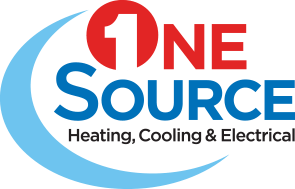For many Hoover, AL homeowners, it’s frustrating to find your living room too hot and your bedroom too cold during the winter season. Temperature differences like this are common in many homes, even those with properly functioning central heating, ventilation and cooling (HVAC) systems. Here’s more on how to improve airflow and create a more comfortable living space.
Why Airflow Matters
Poor air circulation creates uncomfortable hot spots and cold spots in your home. And while physical comfort is important, lack of airflow can also create health issues for many folks due to poor indoor air quality (IAQ). Benefits of good air circulation in your home include:
- No more hot spots and cold spots
- Fresh air in every room
- Reduced odors from food, pets and dirty laundry
- Cleaner air with less dust, pollen and pollution
How to Improve Airflow in Your Home
You’ve probably already tried opening windows, running the fans and even opening or closing the drapes to keep the warm sunlight in or out of certain rooms. Those simple things can help balance out hot spots and cold spots and get the air moving around a little better. But they’re not enough.
So let’s focus on your HVAC system itself and look at some ways to improve your airflow. With a few tweaks, we can smooth out temperature differences from one part of your home to another. And these modifications usually improve your indoor air quality, too.
Change Air Filters
Cleaning or replacing your HVAC air filters every three months or so is the starting point for good air circulation. The purpose of these filters is actually to keep out dust and contaminants that can damage the system over time. But these filters also help to pull particulates out of the air as they circulate throughout your home.
Seal Air Leaks
When your ducts have cracks and holes, the air leaks out before it can get to all the rooms in your home. This not only creates temperature differences from one end of the house to the other, but it forces your HVAC system to work harder. So maintaining and repairing those air ducts can also reduce wear and tear while saving money on your monthly electric bill.
This is also a good time to go through the house and clean all your air vents, as vents clogged with dust and contaminants can negatively impact airflow and indoor air quality. Professional air duct cleaning will also keep a lot of dust and pollutants from ever making it to the vents in the first place.
Upgrade Thermostats for Better Zone Control
Larger homes and two-story homes often suffer from inefficient airflow because the air has to travel so far through the ductwork to reach all the rooms. But an upgrade to your HVAC system can split the house into zones with separate thermostats and give you greater temperature control.
Install Ventilators and Return Ducts
Placing return ducts at different ends of your home will also help with improving airflow. Since each return duct will have its own air filter, you’ll get better air purification throughout the home too. This is ideal for larger households and families with indoor pets.
Does stale air or musty odors sometimes force you to open up doors and windows? That helps, but it also brings cold winter air directly into your living space. Instead, we can install a ventilator to draw more fresh air into your home while expelling stale air and odors right back outside where they belong – without upsetting the temperature balance.
If stale air, household odors and hot and cold spots prevent you from fully relaxing and enjoying your own home, we’ll inspect your home and evaluate your HVAC system. Contact One Source Heating, Cooling & Electrical today to set up an appointment to solve your airflow and IAQ problems.
Image provided by iStock





